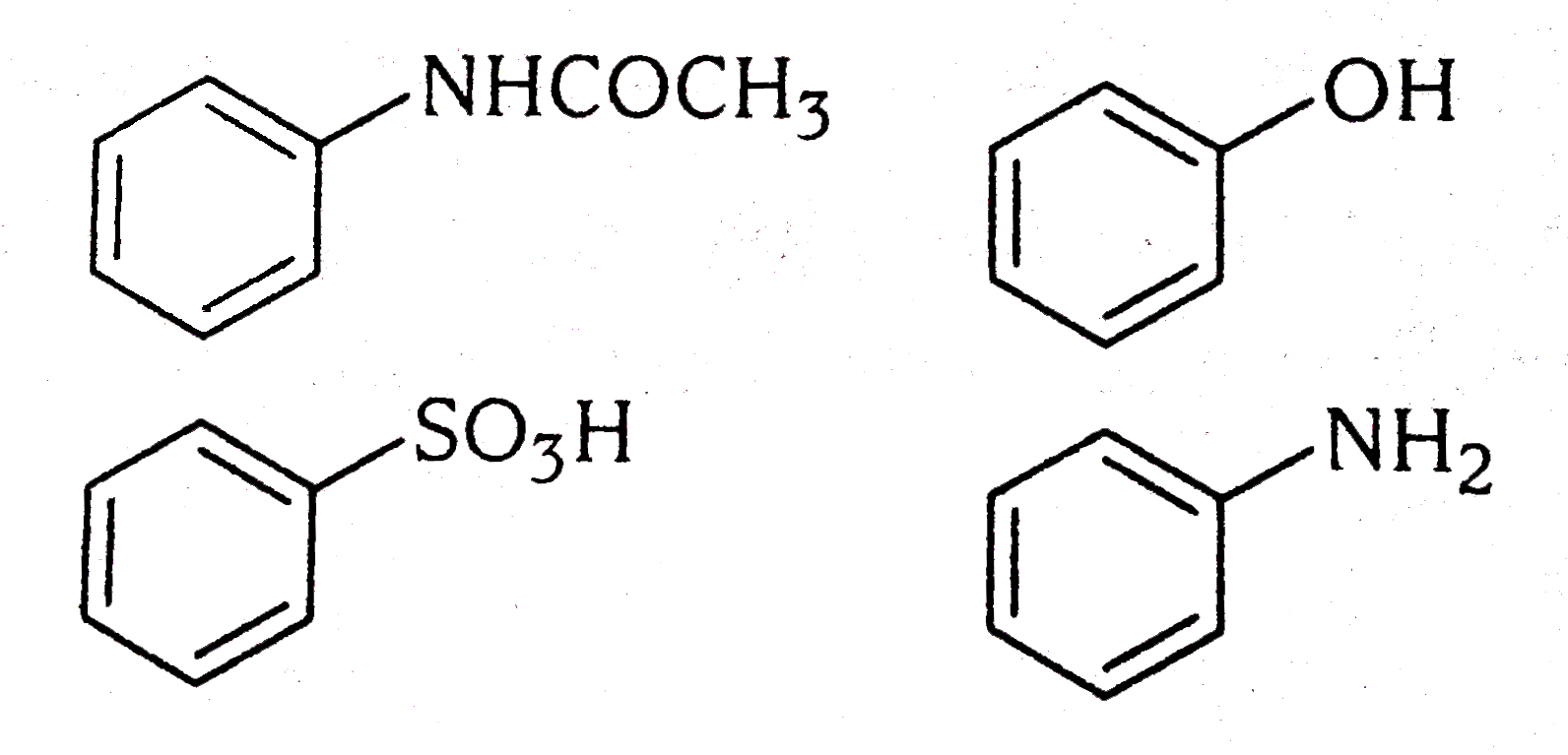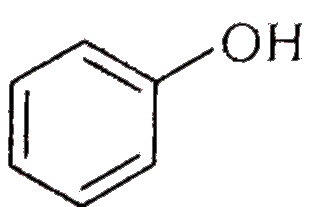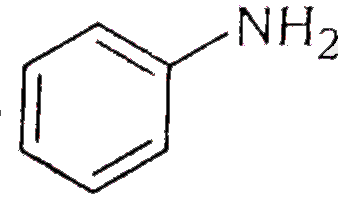Assume that each of the following mixtures was added to a flask or a separatory funnel that contained diethyl ether (as an organic solvent) and mixed well. In which layer (diethyl ether or water) would the organic compound predominate in each case, and in what form would it exist (in its neutral form or as its conjugate base)?




Sodium bicarbonate will remove a proton from a carboxylic acid to form a water-soluble carboxylate salt, but sodium bicarbonate will not remove a proton from a typical phenol, Sodium hydroxide will remove a proton from both a carboxylic acid and a phenol to form salts in each case. Thus, in (a) benzoic acid will be found in the water layer as its sodium salt, whereas in (b) 4-methylphenol will remain in its neutral form and be found predominantly in the ether layer. In (c) and (d) both benzoic acid and 4-methylphenol will be found in the aqueous layer as their corresponding salts.
Related Playlists
- BOOK - MS CHOUHANCHAPTER - PHENOLS AND ARYL HALIDESEXERCISE - ADDITIONAL OBJECTIVE QUESTIONS ( SINGLE CORRECT CHOICE TYPE )20videos
PHENOLS AND ARYL HALIDES
- BOOK - MS CHOUHANCHAPTER - NOMENCLATURE AND CONFORMATIONS OF ALKANES AND CYCLOALKANESEXERCISE - Additional Objective Questions (MCQ)1videos
NOMENCLATURE AND CONFORMATIONS OF ALKANES AND CYCLOALKANES
- BOOK - MS CHOUHANCHAPTER - POLYMERSEXERCISE - ADDITIONAL OBJECTIVE QUESTIONS (INTEGER TYPE)8videos
POLYMERS
Knowledge Check
- Question 1 - Select One
A student added the following substances to water kept in four separate beakers. He stirred the mixture well and filtered each one of them through a filter paper. He would obtain a solid residue on the filter paper in the case of :
Aegg albuminBcommon saltCchalk powderDalum - Question 1 - Select One
An organic compound containing C,H and N gave the following analysis
C=40 %,H=13.33 %,N=46.67 %
What would be its empirical formula ?AC2H7NBC2H7N2CCH4NDCH5N - Question 1 - Select One
What volume of diethly ether must be mixed with 0.125L water to form a solution in which the volume precent of the diethyl ether is 3.2%?
A0.0041LB0.0037LC0.0027LD0.0078L - Question 1 - Select One
An analust is trying to separate a mixture containing the following four organic compounds

She dissolved the mixture in ether and treated the solution with aqueous NaOH solution and finally separated the two fractions: Fraction-I (ether) and Fraction-II (aqueous). Later she acidified Fraction-1 and was able to distill the organic compound(s) into ether to obtain third fraction, Fraction-III. Fraction-III was then treated with aqueous NaHCO3 and the two layers, ether layer (Fraction-IV) and aqueous layer (Fraction-V) were separated. Also Fraction-I was treated with aqueous HCl solution and the two layers, other (Fraction-VI) and aquores layer (Fraction-VII) were seperated. Answer the following three questions based on the above information.
What is true about the species left in fraction-IV?AIt is stronger acid than carbonic acidBIt is stronger acid than waterCIt is neutral to moistened litmus paperDIt cannot be extracted into an aqueous Ba(OH)2 solution - Question 1 - Select One
An analust is trying to separate a mixture containing the following four organic compounds

She dissolved the mixture in ether and treated the solution with aqueous NaOH solution and finally separated the two fractions: Fraction-I (ether) and Fraction-II (aqueous). Later she acidified Fraction-1 and was able to distill the organic compound(s) into ether to obtain third fraction, Fraction-III. Fraction-III was then treated with aqueous NaHCO3 and the two layers, ether layer (Fraction-IV) and aqueous layer (Fraction-V) were separated. Also Fraction-I was treated with aqueous HCl solution and the two layers, other (Fraction-VI) and aquores layer (Fraction-VII) were seperated. Answer the following three questions based on the above information.
Fraction-V on acidification followed by distillation will giveA B
B C
C D
D
Similar Questions
An organic compound containing C,H and N gave the following analysis
C=40 %,H=13.33 %,N=46.67 %
What would be its empirical formula ?View SolutionProperties of the elements are given below. Where would you locate the following elements in the periodic table ?
(a) A soft metal stored under kerosene
(b) An element with variable (more than one) valency stored under water.
(c) An element which is tetravalent and forms the basis of organic chemistry
(d) An element which is an inert gas with atomic number 2
(e) An element whose thin oxide layer is used to make other element corrosion resistant by the process of ''anodising''.View SolutionProperties of the elements are given below. Where would you locate the following elements in the periodic table ?
(a) A soft metal stored under kerosene
(b) An element with variable (more than one) valency stored under water.
(c) An element which is tetravalent and forms the basis of organic chemistry
(d) An element which is an inert gas with atomic number 2
(e) An element whose thin oxide layer is used to make other element corrosion resistant by the process of ''anodising''.View SolutionProperties of the elements are given below. Where would you locate the following elements in the periodic table ?
(a) A soft metal stored under kerosene
(b) An element with variable (more than one) valency stored under water.
(c) An element which is tetravalent and forms the basis of organic chemistry
(d) An element which is an inert gas with atomic number 2
(e) An element whose thin oxide layer is used to make other element corrosion resistant by the process of ''anodising''.View SolutionAtoms of eight elements A, B, C, D, E, F, G and H have the same number of electronic shells but different number of electrons in their outermost shell. It was found that elements A and G combine to form an ionic compound which can also be extracted from sea water. This compound is added in a small amount to almost all vegetable dishes during cooking. Oxides of elements A and B are basic in nature while those of E and Fare acidic. The oxide of D is almost neutral. Based on the above information, answer the following questions:
(i) To which group or period of the periodic table do the listed elements belong? (ii) What would be the nature of compounds formed by a combination of elements B and F? (iii) Which two of these elements could definitely be metals and which are likely to be non-metals? (iv) Which one of the eight elements is most likely to be found in gaseous state at room temperature? (v) If the number of electrons in the outermost shell of elements C and G be 3 and 7 respectively, write the formula of the compound formed by the combination of C and G. (vi) Which one of the eight elements is likely to be a noble gas? (vii) Which one of the eight elements would have the largest atomic radius? (viii) Which one of these eight elements is likely to be a semi-metal or metalloid?View Solution

